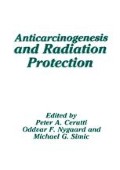Abstract
Higher plants contain an extensive array of biologically active chemicals, some of which are potent modifiers of chemical carcinogenesis (1). Specifically, some of these agents have been shown to be active in inhibiting the initiation stage of the carcinogenesis process (2). Members of the Allium genus, which include onions and garlic, are rich in sulfur-containing compounds. Among the major components of garlic oil are diallyl disulfide (DADS, 66%) and diallyl sulfide (DAS, 14%) (3). It has been previously shown that the latter agent, DAS, can inhibit 1,2-dimethylhydrazine-induced genotoxicity in the murine colonic epithelium (4) and cyclophosphamide-induced genotoxicity in the murine urothelium and hair follicles (5). Recently it has been shown that DAS can inhibit 1,2-dimethylhydrazine-induced colon tumorigenesis (6). The goal of this study was to determine the optimal time for the oral administration of DAS, prior to carcinogen treatment, and to determine the efficacy of other structurally analogous sulfur-containing compounds.
Access this chapter
Tax calculation will be finalised at checkout
Purchases are for personal use only
Preview
Unable to display preview. Download preview PDF.
References
National Academy of Sciences, Diet, Nutrition and Cancer, pp. 358–370. National Academy Press, Washington, D.C., 1982.
H.L. Newmark, A hypothesis for dietary components as a blocking agent of chemical carcinogenesis, plant phenollcs and pyrrole pigments. Nutr. Cancer 58–70 (1984).
M.H. Brodnltz, J.V. Pascale, and L.V. Derslice, Flavor components of garlic exract. J. Agrlc. Food Chem. 19; 273–275 (1971).
M.J. Wargovich and M.T. Goldberg, Diallyl sulfide: A naturally occurring thioether that inhibits carcinogen-Induced nuclear damage to colori epthelial cells in vivo. Mutat. Res. 143: 127–129 (1985).
M.T. Goldberg and P.D. Josephy, Studies on the mechanism of action of diallyl sulfide, an inhibitor of the genotoxic effects of cyclophosphamide. Can. J. Physiol. Pharmacol. 65: 476–471 (1987).
M.J. Wargovich, Diallyl sulfide, a flavor components of garlic (Allium sativum) inhibits dimethylhydrazine-induced colon cancer. Carcinogenesis 8: 487–489 (1987)
M.J. Wargovich, M.T. Golderg, H.L. Newark, and W.R. Bruce, Nuclear aberrations as a short-term test for genotoxicity to the colon: evaluation of nineteen agents in mice. J. Natl. Cancer Inst. 71: 133–137 (1983).
Author information
Authors and Affiliations
Editor information
Editors and Affiliations
Rights and permissions
Copyright information
© 1987 Plenum Press, New York
About this chapter
Cite this chapter
Goldberg, M.T. (1987). Inhibition of Genotoxicity by Diallyl Sulfide and Structural Analogues. In: Cerutti, P.A., Nygaard, O.F., Simic, M.G. (eds) Anticarcinogenesis and Radiation Protection. Springer, Boston, MA. https://doi.org/10.1007/978-1-4615-6462-1_46
Download citation
DOI: https://doi.org/10.1007/978-1-4615-6462-1_46
Publisher Name: Springer, Boston, MA
Print ISBN: 978-1-4615-6464-5
Online ISBN: 978-1-4615-6462-1
eBook Packages: Springer Book Archive

